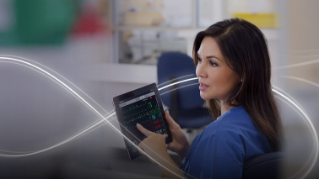Stuart Critchley, our product specialist for IT and connectivity talks about his career at Mindray, digitisation in the NHS, and a few top tips on implementing a smooth and successful integration project.
.jpg)
What are some key connectivity challenges facing the NHS?
There is quite a lot of variation between Trusts when it comes to connectivity but there are some common issues that every hospital, experienced or not, must contend with. The most common challenges come from the need to balance the vision for the project with the requirements and limitations of multiple stakeholder groups. In order to implement a successful integration, there must be clarity. This can only be achieved when everyone understands the vision, from informatics, network support, and infrastructure, to clinical engineering and medical professionals. Our job is often to consult and encourage collaboration between these groups.
To focus the project and ensure it ultimately improves patient safety, we have seen great success working with clinical champions; dedicated medical professionals that understand the project’s goals and how it can benefit patients. A strong clinical presence ensures that the solution ends up tailored to your hospital’s own workflows and has a demonstrable impact on the lives of patients and caregivers alike.
However, as well as a vision of the benefits there must also be an awareness of the costs. Top to bottom integration from your medical devices, into a nursing station and on to an electronic patient record (EPR) system can involve multiple wards with different budgets. Figuring out how those costs will be distributed before the project begins, by creating a business case, will go a long way to streamlining the process and removing any unforeseen challenges.
We are increasingly seeing customers that do have a clear idea of what they would like their connected system to achieve, but often we can actually do more than they thought was possible. This is partly due to the huge flexibility and extensive capabilities within these systems, which can be daunting and difficult to imagine at first. With more hospitals become fully connected, this reticent is declining but we as suppliers have a responsibility to keep hospitals informed of what is possible. Cybersecurity is another particularly daunting area of connectivity that many Trusts struggle with, but with careful planning and flexible, scalable systems such as M-Connect, it does not have to be a challenge.
Top tips for a smooth integration
- Get engagement and support from all key stakeholders first, this includes buy-in from informatics, network support, infrastructure, clinical engineering, and clinical experts.
- Make sure clinical compliance is central to the project’s goals. Having a sophisticated connected system means nothing if it’s not fit for the clinical environment.
- Create a business case to establish where the costs are going to come from and how they will be shared throughout the hospital.

How has the industry changed in your experience, and where are we heading?
I’ve worked in the IT and connectivity side of the medical device industry for around 10 years and the pace of change I’ve seen during that time is immense. Now connectivity is a standard feature, nobody asks for devices without it.
A lot of the features surrounding interoperability and uploading data to an EPR have been around for a while, except now the scale and flexibility of those systems has dramatically increased. Caregivers can now sit at a nursing station and see all continuous vitals, ECG reports, Early Warning Scores (EWS), alerts and a host of other parameters for hundreds of patients simultaneously. Connecting more data sets together with a system like M-Connect, also opens up huge opportunities for future research and proactive healthcare, as well as immediate benefits to patients through greater visibility and holistic data.
Once more hospitals have these large data sets in place, they can integrate the data with AI tools like trend analysis to gain a deeper understanding into the relationships between monitoring parameters.
In order to maximise the speed of integration and ensure that all Trusts receive the benefit of a fully connected system, then there does need to be some standardisation of cybersecurity regulations across the NHS. There are standards and protocols being put in place but currently the rules around safety and integrity of patient data are different from Trust to Trust. As more hospitals introduce interoperability and EPR connectivity it will mean this issue becomes more urgent.
What has it been like joining Mindray mid-pandemic?
I joined in the middle of last year and have been impressed at how adaptable and understanding the company has been, allowing me to fit my hours in the field and at home around my schedule. My partner is a key worker so being able to flex my work around hers has been a huge help. That flexibility is also evident in the way we deal with customers; our configurations and training sessions are always customised to their needs, and I enjoy talking them through the process knowing that we can accommodate their requirements. The fact that we can still deliver on large projects like the Grange, with a combination of remote working and site visits, showed me that Mindray has fully adjusted to the pandemic environment.
Something else that impressed me is the speed of innovation within the company and how the UK and Europe actually contribute to R&D. When a customer asks if a particular solution is possible it feels great knowing that we have such a responsive R&D team behind us to develop something entirely new.
What is your proudest moment at Mindray so far?
I was part of a very complicated project where my first introduction to the customer involved working to extremely tight timescales. In the end I managed to complete the work and received some great feedback from both the customer and my colleagues. It’s great to feel valued by customers for the work that you can provide, but it was especially nice to be recognised by such a supportive team.

